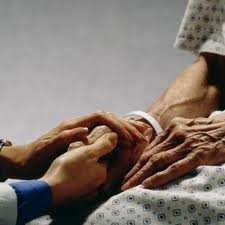A cerebrovascular accident or CVA is also known as a stroke. It is a condition wherein the steady blood supply to your brain is disrupted. This may happen at a gradual state or all of a sudden. The signs and symptoms of a stroke depend on the region and the size of the brain that is affected. When the left hemisphere is affected by the stroke, you will experience paralyzed right side of the body (hemiplegia), difficulty in swallowing, and speech impairment. When the right hemisphere is affected, you will experience neglect of your left side, implusiveness, difficulty learning, and agnosia. It is definitely a challenge for anyone to have a stroke and recover from it. It is never easy to lose your balance and physical strength and then work hard at getting it all back. Most of the time, patience and effort are really poured out into this. Vigilance must be maintained to make sure that your or your loved one recover as fast as possible.
Individualized therapy is the usual trend in rehabilitating stroke victims. These therapies and exercises are facilitated by professionals such as physical therapists, speech therapists, and speech therapists as well. One must be alert in recognizing the signs and symptoms of a stroke. There could be sudden numbness (arm, leg, or face on one side of body); sudden speech difficulty or understanding; sudden confusion, memory loss, or attention deficit; sudden imbalance; sudden dizziness; sudden blurred vision; sudden severe headache and unconsciousness. Here is a list of stroke recovery exercises that you could discuss with your doctor or therapist:
1. PRM (passive range of motion)
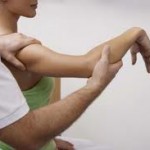 Flaccidity may immediately follow the stroke. This is a condition wherein one side of the body cannot be controlled. This is included in the list of stroke recovery exercises because it is important for the uncontrolled body parts to still have movement so that the joints may remain lubricated and flexible. Movements should be coordinated into the ankles, knees, hips, fingers, wrists, elbows, and shoulders.
Flaccidity may immediately follow the stroke. This is a condition wherein one side of the body cannot be controlled. This is included in the list of stroke recovery exercises because it is important for the uncontrolled body parts to still have movement so that the joints may remain lubricated and flexible. Movements should be coordinated into the ankles, knees, hips, fingers, wrists, elbows, and shoulders.
2. ARRM (active and resisted range of motion)
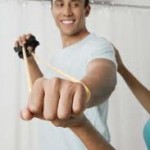 These exercises facilitate unassisted ranges of motion. Every joint is moved here already. This also belongs to the list of stroke recovery exercises because this teaches the patient to regain his or her own strength after the stroke. The resistance part is in the form of free weights, resistance bands, and resistance from a therapist that is provided manually.
These exercises facilitate unassisted ranges of motion. Every joint is moved here already. This also belongs to the list of stroke recovery exercises because this teaches the patient to regain his or her own strength after the stroke. The resistance part is in the form of free weights, resistance bands, and resistance from a therapist that is provided manually.
3. AARM (active assisted range of motion)
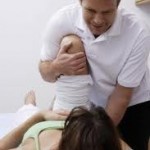 Active assisted range of motion is another that is part of the list of stroke recovery exercises because this exercise aims to restore the former activity and strength of their muscles. These exercise routines can be performed with a cane, the unaffected limb, or another person such as the therapist.
Active assisted range of motion is another that is part of the list of stroke recovery exercises because this exercise aims to restore the former activity and strength of their muscles. These exercise routines can be performed with a cane, the unaffected limb, or another person such as the therapist.
4. Coordination
 This set in the list of stroke recovery exercises aims to get back the lost coordination in the patient’s limbs during the stroke. Here, the patient lifts the affected leg and places it on the opposite ankle (unaffected leg).Then the ankle is slid up to the knee of the unaffected leg and then lowered back.
This set in the list of stroke recovery exercises aims to get back the lost coordination in the patient’s limbs during the stroke. Here, the patient lifts the affected leg and places it on the opposite ankle (unaffected leg).Then the ankle is slid up to the knee of the unaffected leg and then lowered back.
5. Stability and balance
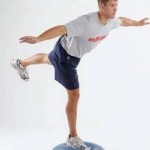 The person’s control of his or her own trunk after the stroke may be lost for a while. This may need aides to maintain. Balance while standing needs to be worked on too. Parallel bars, exercise balls, canes, and walkers are all used for recovery.
The person’s control of his or her own trunk after the stroke may be lost for a while. This may need aides to maintain. Balance while standing needs to be worked on too. Parallel bars, exercise balls, canes, and walkers are all used for recovery.
6. Walking
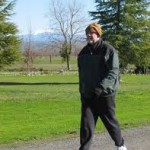 Walking is included in the list of stroke recovery exercises because it is the easiest thing to do right after a stroke, most preferably, with assistance. Not everyone could walk by themselves after a stroke but walking does strengthen muscles. A cane or a walker could really help in this exercise.
Walking is included in the list of stroke recovery exercises because it is the easiest thing to do right after a stroke, most preferably, with assistance. Not everyone could walk by themselves after a stroke but walking does strengthen muscles. A cane or a walker could really help in this exercise.
7. Stretching
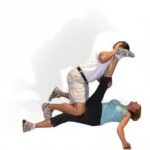 Muscles benefit from stretching exercises. Stretching allows the muscles to regain proper circulation, strength, and movements of both minor and major muscle groups.
Muscles benefit from stretching exercises. Stretching allows the muscles to regain proper circulation, strength, and movements of both minor and major muscle groups.
In following the list of stroke recovery exercises, you should very well coordinate with your doctor or therapists because stroke recovery is a personal thing. You should take note that there should always be a follow up when the stroke patient goes home after the regular session. Recovery after a stroke doesn’t take just a few hours or days but weeks or years. This depends on how severe the stroke was. Family members and caregivers would have to be really involved in every aspect—physical, mental, emotional, and even spiritual. Frustrations will always be there during the recovery process of a stroke, so the support groups have to stay there by the stroke victim’s side at all times.
